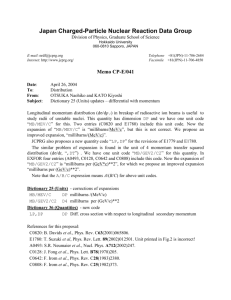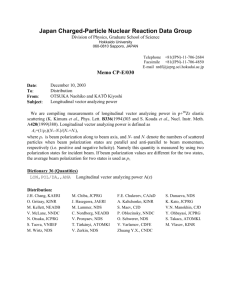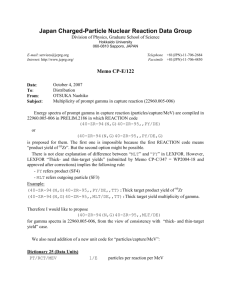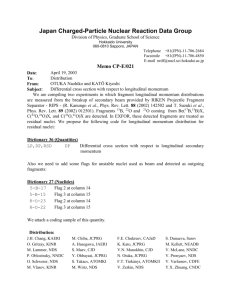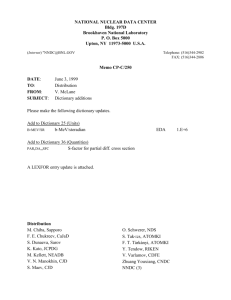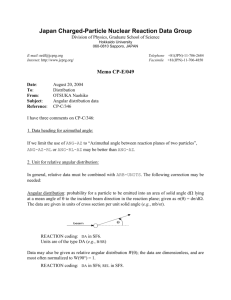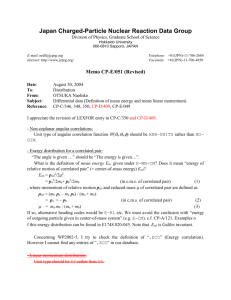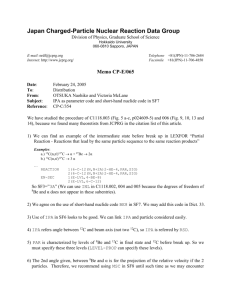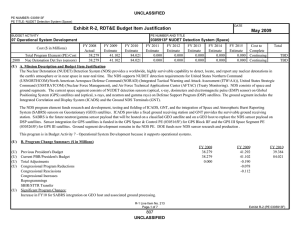047 - IAEA Nuclear Data Services
advertisement
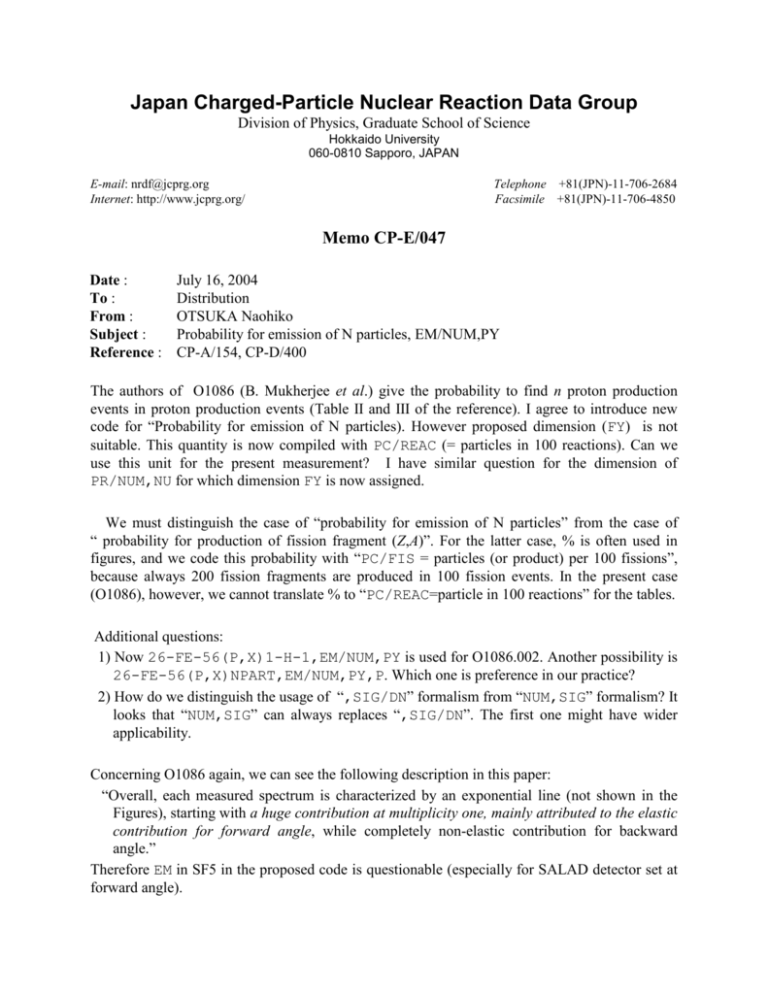
Japan Charged-Particle Nuclear Reaction Data Group Division of Physics, Graduate School of Science Hokkaido University 060-0810 Sapporo, JAPAN E-mail: nrdf@jcprg.org Internet: http://www.jcprg.org/ Telephone +81(JPN)-11-706-2684 Facsimile +81(JPN)-11-706-4850 Memo CP-E/047 Date : To : From : Subject : Reference : July 16, 2004 Distribution OTSUKA Naohiko Probability for emission of N particles, EM/NUM,PY CP-A/154, CP-D/400 The authors of O1086 (B. Mukherjee et al.) give the probability to find n proton production events in proton production events (Table II and III of the reference). I agree to introduce new code for “Probability for emission of N particles). However proposed dimension (FY) is not suitable. This quantity is now compiled with PC/REAC (= particles in 100 reactions). Can we use this unit for the present measurement? I have similar question for the dimension of PR/NUM,NU for which dimension FY is now assigned. We must distinguish the case of “probability for emission of N particles” from the case of “ probability for production of fission fragment (Z,A)”. For the latter case, % is often used in figures, and we code this probability with “PC/FIS = particles (or product) per 100 fissions”, because always 200 fission fragments are produced in 100 fission events. In the present case (O1086), however, we cannot translate % to “PC/REAC=particle in 100 reactions” for the tables. Additional questions: 1) Now 26-FE-56(P,X)1-H-1,EM/NUM,PY is used for O1086.002. Another possibility is 26-FE-56(P,X)NPART,EM/NUM,PY,P. Which one is preference in our practice? 2) How do we distinguish the usage of “,SIG/DN” formalism from “NUM,SIG” formalism? It looks that “NUM,SIG” can always replaces “,SIG/DN”. The first one might have wider applicability. Concerning O1086 again, we can see the following description in this paper: “Overall, each measured spectrum is characterized by an exponential line (not shown in the Figures), starting with a huge contribution at multiplicity one, mainly attributed to the elastic contribution for forward angle, while completely non-elastic contribution for backward angle.” Therefore EM in SF5 in the proposed code is questionable (especially for SALAD detector set at forward angle). Distribution: S. Babykina, CAJaD S. Dunaeva, NDS A. Kaltchenko, KINR M. Lammer, NDS M.Mikhaylyukova, CJD O. Schwerer, NDS V. Pronyaev, NDS H.W. Yu, CNDC J.H. Chang, KAERI Z.G. Ge, CNDC K. Katō, JCPRG S. Maev, CJD C. Nordborg, NEA-DB S. Takacs, ATOMKI V. Varlamov, CDFE V. Zerkin, NDS M. Chiba, JCPRG O. Gritzay, KINR M. Kellet, NEA-DB V.N. Manokhin, CJD P. Oblozinsky, NNDC S. Taova, VNIIEF M. Vlasov, KINR Y.X. Zhuang, CNDC F.E. Chukreev, CAJaD A. Hasegawa, JAERI M. Lammer, NDS V. McLane, NNDC N. Otsuka, JCPRG T. Tárkányi, ATOMKI M. Wirtz, NDS EXFOR, NEA-DB
